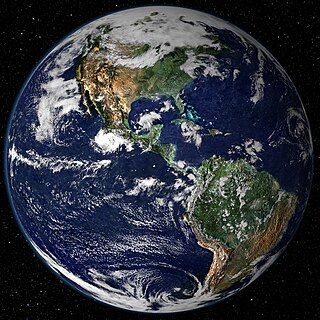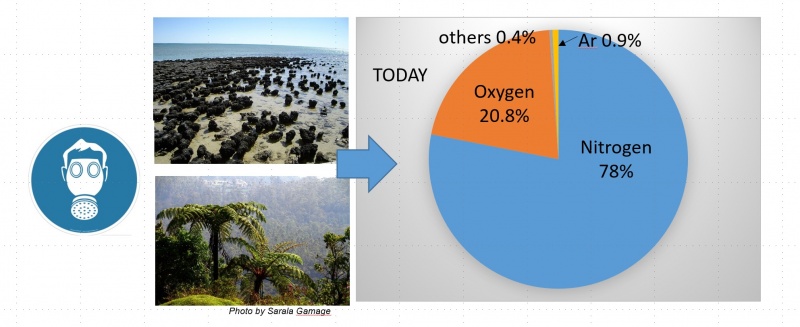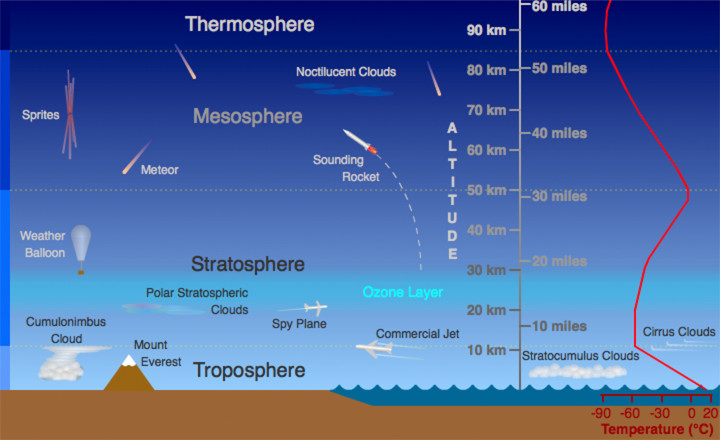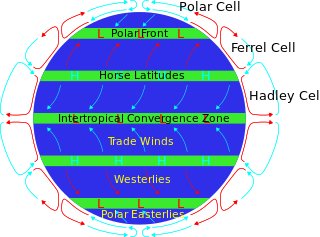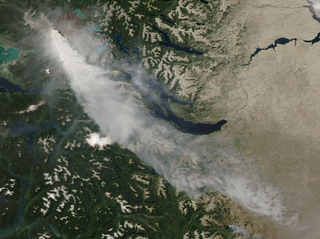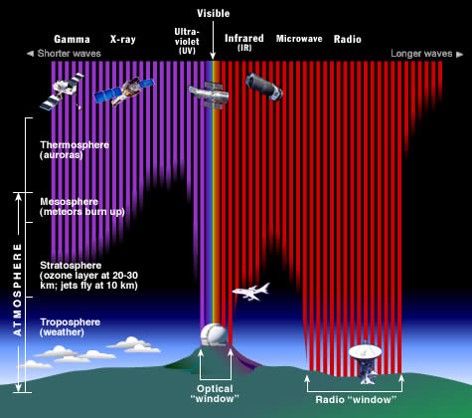Human earth shapers/ETHS101/Earthsystems/Atmosphere
Contents
Atmosphere
Early life began to change the atmosphere by using gases such as methane, sulfur dioxide, and carbon dioxide and expelling oxygen.
The Earth’s atmosphere has evolved with life so now the atmosphere is nearly 21% oxygen. In comparison CO2 in the atmosphere is tiny (0.04%) and methane makes up even less (0.00018%). None of these volume estimates take water vapour into account.
What makes up the Atmosphere
Scientist divide the atmosphere into spheres that encircle the Earth based on composition and temperature
- Most (75%) of the mass of the atmosphere is in the troposphere.
- Mass is about 5.14 x 1018 kg (=514,000,000,000,000,000 kg*)
- estimate from Trenberth & Guillemot, 1994 Total mass of the atmosphere, Journal of Geophysical Research, 99, 23,079-23,088
Atmosphere on the move
Rotation of the Earth, heat from the sun and cooling where there is no sun all help create the circulation systems that move the Earth’s atmosphere. The image above shows the overall circulation of the atmosphere. Known and exploited by sailors.Air currents can move gases, microbes, and particles all around the Earth so the air you are breathing in today may have been halfway around the world a few days ago
- Ash from Chile's Puyehue-Cordon-Calle volcanic complex eruption in 2011 circumnavigated the world twice in the southern latitudes and caused the closure of airports in southern Australia.*
How the Atmosphere protects us
The atmosphere blocks out all gamma rays, X-rays and much of the Ultraviolet (short wavelength radiation) that is harmful to life (see image above). Only visible light, limited Ultraviolet and long wavelength called radio waves make it to the Earth's surface. The most important absorbing gases are O3 for absorbing Ultraviolet radiation, and CO2 and H2O for absorbing Infrared Red radiation. Most meteorites burn up in the mesosphere: Very few actually land on Earth’s surface.
What is the Greenhouse Effect?
Greenhouse gases form a blanket in the lower atmosphere that traps some of the sun’s energy after it is reflected off the Earth’s surface. The greenhouse mechanism maintains the Earth 33 degrees Celsius higher than it would be otherwise. Greenhouse gases include carbon monoxide, carbon dioxide (CO2) and methane (CH4). Water vapour is also important as it forms clouds which can hold in heat. Cycling of carbon is very important as gases that contain carbon have a large impact on the greenhouse effect (see the page at the end of this week for details on the Carbon Cycle)
Interestingly, Venus, which is in the Goldilocks zone, is too hot for life. Surface temperatures are around 460 degrees Celsius. It is closer to the Sun and get's more radiation, but the heat is mainly trapped by it's thick C-rich atmosphere. It is too hot for liquid water on the surface.
